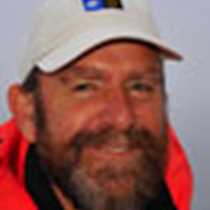Mitchell Cove, Robert Island, South Shetland
We set off last night for Antarctic Sound, our last chance to penetrate the Weddell Sea, which has been choked with ice all season. The Sound takes the name of Nordenskjöld’s ship, crushed by ice here in 1903. We recall that Shackleton’s Endurance was also devoured by ice in the same area. So when thick ice and dense fog crept up on us at 1 in the morning, we declined the invitation to spend an heroic winter on Elephant Island dining on penguins, seals and limpets, and beat a strategic retreat back into the Bransfield Strait. First we tried a brand new landing site, Mead Island, but within minutes of taking the beach, the wind cranked up from Force 5 to Force 7. Machinegun volleys of cold rain quickly thinned our ranks and a Zodiac evacuation brought our stormtroopers back to the mother ship to lick their wounds. Refortified by hot chocolate and a fine lunch, we quickly forgot our morning’s reversals and were prepared to try a fresh landing in the afternoon.
Our last landfall in Antarctica! A shiny black-boulder beach, pummeled to a flat pavement by powerful winter waves. Two large grey boulders in the surf rear up: young elephant seals, as dark as the stones. The most colourful strandline yet: orange, olive and purple seaweed jetsam like coloured confetti. Above the storm beach, vivid green moss beds are riven by rushing meltwater streams.
Outraged skuas swoop above us. One stands to reveal two coffee coloured fluffball chicks. Another sits on a single camouflaged khaki egg. Rotting whale skeletons moulder on the raised beaches, ancient shorelines whose rounded black cobbles are now covered in intricate lichen scrimshaw. But the finest feature grows on a steep boulder scree above the beach. Here, in the lee of a sheltering basalt ridge, the jagged boulders are covered in the wiry ivory-green whiskers of Old Man’s Beard lichen, ruffled by the wind, glistening with raindrops. Protected from the shredding winds for which South Shetland is renowned, every boulder has the bleached, bushy sideburns of a Methuselah. They are ancient indeed, for these are the coast redwoods of Antarctica. This lichen at its fastest grows 0.45mm a year, less than an inch every 50 years. The longest I measure is 6”, making it 300 years old at a conservative estimate. Standing, amazed, above this ancient lichen forest, I am looking at plants that would have been young when Captain Cook first crossed the Antarctic Circle, that would have seen the discovery brig Williams pass in 1819, and have been spectators at the slaughter of fur seals and whales in the ensuing decades. May they grow older yet, and live to see these fabulous southern seas alive with the right whales, fur seals and the multitudes of penguins which once flourished here.
We set off last night for Antarctic Sound, our last chance to penetrate the Weddell Sea, which has been choked with ice all season. The Sound takes the name of Nordenskjöld’s ship, crushed by ice here in 1903. We recall that Shackleton’s Endurance was also devoured by ice in the same area. So when thick ice and dense fog crept up on us at 1 in the morning, we declined the invitation to spend an heroic winter on Elephant Island dining on penguins, seals and limpets, and beat a strategic retreat back into the Bransfield Strait. First we tried a brand new landing site, Mead Island, but within minutes of taking the beach, the wind cranked up from Force 5 to Force 7. Machinegun volleys of cold rain quickly thinned our ranks and a Zodiac evacuation brought our stormtroopers back to the mother ship to lick their wounds. Refortified by hot chocolate and a fine lunch, we quickly forgot our morning’s reversals and were prepared to try a fresh landing in the afternoon.
Our last landfall in Antarctica! A shiny black-boulder beach, pummeled to a flat pavement by powerful winter waves. Two large grey boulders in the surf rear up: young elephant seals, as dark as the stones. The most colourful strandline yet: orange, olive and purple seaweed jetsam like coloured confetti. Above the storm beach, vivid green moss beds are riven by rushing meltwater streams.
Outraged skuas swoop above us. One stands to reveal two coffee coloured fluffball chicks. Another sits on a single camouflaged khaki egg. Rotting whale skeletons moulder on the raised beaches, ancient shorelines whose rounded black cobbles are now covered in intricate lichen scrimshaw. But the finest feature grows on a steep boulder scree above the beach. Here, in the lee of a sheltering basalt ridge, the jagged boulders are covered in the wiry ivory-green whiskers of Old Man’s Beard lichen, ruffled by the wind, glistening with raindrops. Protected from the shredding winds for which South Shetland is renowned, every boulder has the bleached, bushy sideburns of a Methuselah. They are ancient indeed, for these are the coast redwoods of Antarctica. This lichen at its fastest grows 0.45mm a year, less than an inch every 50 years. The longest I measure is 6”, making it 300 years old at a conservative estimate. Standing, amazed, above this ancient lichen forest, I am looking at plants that would have been young when Captain Cook first crossed the Antarctic Circle, that would have seen the discovery brig Williams pass in 1819, and have been spectators at the slaughter of fur seals and whales in the ensuing decades. May they grow older yet, and live to see these fabulous southern seas alive with the right whales, fur seals and the multitudes of penguins which once flourished here.




